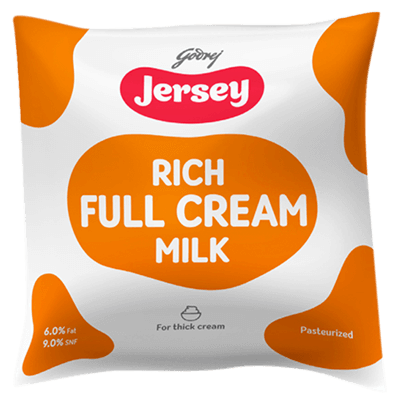Many of us have had the habit of drinking milk every day since childhood. But most of us are not aware of the amazing facts about milk.
Everyone knows that it is healthy and provides many essential nutrients. We also know that it is beneficial for both growing children and adults.
However, many people often overlook some of the amazing facts about milk. In this blog, we have covered several fun facts about milk that show how amazing this drink is. Keep
reading to explore the top 12 amazing facts about milk.
1. The color of milk - Milk is white due to the presence of fat and protein content in it. Even though around 87% of milk is water, the fat and protein molecules reflect light and give milk its white color.
2. Dense in nutrition - Milk has 9 essential amino acids that humans need. It is also packed with calcium, protein, phosphorus, niacin, potassium, riboflavin, and vitamins like A, D, and B12. As a result, it is considered to be the only food on which humans can survive wholly. No other single food has every nutrient that adults need.
3. Salt increases its shelf life - When you open a new packet of milk, add a pinch of salt and shake it thoroughly. Doing so increases its shelf life by a week. The salt slows down the souring of milk by preventing the active growth of bacteria in it.
4. Largest producer of milk in the world - India is the largest producer of milk globally. It makes a contribution of around 22% towards the global production of milk. It is known for mainly exporting skimmed milk powder. India is followed by the USA, China, and Pakistan in terms of the highest milk production.
5. Nobel prizes - Most Nobel prizes are won by countries that drink milk. It was revealed through a study in 2013 that the nations where the citizens consume the most dairy per capita win the most Nobel prizes. Sweden is at the top of this list as it wins 31.855 prizes for every 10 million citizens.
6. Whole milk vs low-fat milk - Many believe that whole milk results in higher weight gain when compared to low-fat milk. However, it has been observed that whole milk helps in better weight management. It is because whole milk has a higher number of bioactive substances that increase your metabolism and burn more amount of fat.
7. Bioplastic from milk - Now, milk can be used to make bioplastic, which is biodegradable. It is also odourless, insoluble in water, antiallergenic, and antistatic. Moreover, it is virtually non-flammable, and thus, never catches fire.
8. Food of the Gods - In ancient culture, milk was considered to be the ‘food of the gods’ by Romans, Indians, Greeks, Egyptians, and many others. Therefore, milk has been highly valued since the old times. Even in the current times, milk is a part of many religious and
cultural rituals.
9. Best drink for post-workout recovery - After an intense workout session, drinking a glass of milk can help in recovery. The proteins, carbohydrates, micronutrients, and fats help in the recovery process better than the sports drinks sold on the market.
10. Great hydration - Milk is known to be a better hydrator than water as it is retained for a longer time in the body. It contains electrolytes and carbohydrates that help in the effective hydration of the body.
11. Milk needed for cheese - In order to make 1 kg of cheese, we need around 10 liters of milk. The quantity may vary depending on the type of cheese that is being produced. The amount of butterfat present in the milk can also affect the quantity of milk required.
12. Lactating cows need more water - Since milk is 85-87% water, lactating cows need more water than usual to produce milk. For every liter of milk, a minimum of 2 and a half liters of water needs to be consumed by a dairy animal. Lactating cows usually need around 30-40 gallons of water per day.
Conclusion:
After learning all the facts about milk, it must be obvious that milk is more magical than we originally thought. It is also the cheapest source of whole nutrition available in the market. Therefore, making it a part of your daily diet can be highly beneficial for you in the long term.




























